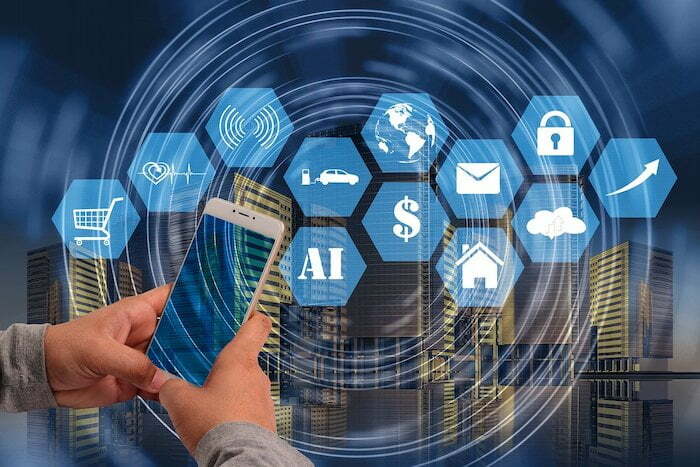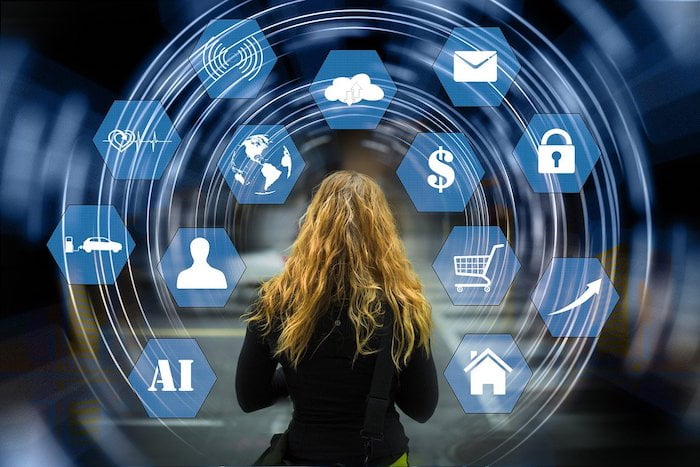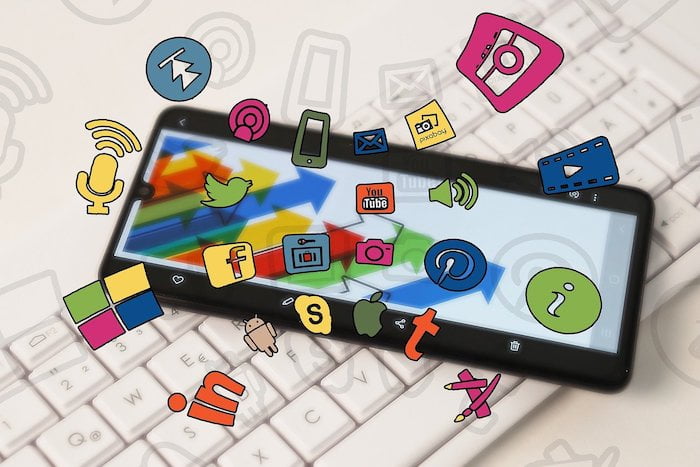Table of Contents
We all rely on apps in all areas of our lives and work. Whether it’s completing administration, navigating to a destination, sending money, or connecting with a business, almost everything that needs doing can be done via an application. This is why Business 2 Community asserts that customers now expect apps as a baseline that in turn works to nurture a sense of brand credibility. Their writer Alan Draper expands, “This means that it is not only becoming a necessity to gain a competitive edge over other businesses, it is becoming a necessity to avoid falling behind your competition.”
As organizations and businesses learn this, they are transitioning much of their customer services, communications, and support activities to their apps. In some cases, they might even be working with mobile app development specialists for that exact reason: they have decided to pivot their customer service functionalities into an app even while other branches of their operational offerings remain the same. This is an example of how market forces are guiding how businesses and organizations respond to market factors. Currently, app development and quality applications have an urgent demand both for the owners of the apps who are investing in development with the objective to solve certain problems and for prospective or existing customers who prefer or are looking for the user-friendly, easy functionalities of a quality app.
The importance of mobile apps is reflected in the numbers: app development is a massive global business with Statista finding that total revenue in 2022 was $430.90 billion USD and currently close to 60 percent of the world’s internet traffic now happens on mobile devices (a figure that excludes tablets). The fact is that most people look to apps when they spend time online and these products need to perform to win and retain users. In order to do this, developers are positioned to integrate the technical capabilities of evermore sophisticated artificial intelligence (AI) into a user-experience (UX) that is realistically interactive.
In this article, we’re covering the growing urgency for all businesses and organizations looking to bring an app to market or with an app already available in the App Store and Google Play store to invest in chatbot development — the AI technology that takes all areas of an application’s customer service features from passable to unforgettable. Over the course of this blog, we will be exploring the following points so you can gain a thorough sense of how chatbots are synonymous with customer service in this decade of the 21st century:
- Understanding exactly how chatbots work in app development
- Why customer service features need to be focused on in mobile app development
- 10 ways investing in chatbot app development helps deliver standout customer service
Read on to learn about these areas of discussion with takeaways about how this technology continues to evolve and the role of app developers in shaping this high-value vertical in the global services market.

Understanding exactly how chatbots work in app development
Let us start with how influential chatbot technology is in mobile app development right now. As of January 2023, Precedence Research reported via Globe Newswire the projection that this year the global market would reach a value of around $4.9 billion USD — this is nearly 500 percent growth on its 2022 value. To say that this is a seismic increase is an underestimate. In their report, researchers attribute these colossal figures to, “Factors such as a surge in demand for uninterrupted customer assistance, adoption of advanced chatbots by market players, and increasing penetration of chatbots on e-commerce websites are driving chatbot market growth.”
If we are reviewing the actual longevity of this growth, beyond the CAGR projections of 19.29 percent for the 2023 to 2032 period the technical capabilities are what will most likely affect this. In their report, Precedence Research analysts emphasize that there are some technical shortcomings in the area of voice authentication that are weakening functionality. They say, “Furthermore, initiatives towards developing self-learning chatbots to deliver more human-like conversational experiences are expected to provide growth opportunities to the market.”
The most recent news in the chatbot market and app development is tied to the historic launch of the ChatGPT prototype in November 2022. In the handful of months since announcement, the parent company OpenAI has taken on investment from Microsoft and millions of people have flocked to their site to demo the product’s technical, creative, philosophical, and problem-solving interactive capabilities. The accuracy, power, scope, and agility of the ChatGPT product was immediately lauded for its promise of what this kind of chatbot with their natural language processing (NLP) and machine learning (ML) AI are capable of in a range of technical implementations inclusive of customer service applications.
When chatbot technology is used in mobile app development, the AI’s NLP systems can take the inputs and user activity to interpret, analyze, parse, and comprehend their needs. When developers build this into the product during the development process, this is specifically incorporated to meet operational and userflow needs. As we have already touched upon, customer service and interactive NLP functionalities are omnipresent in some form in nearly all apps now as responsive and interactive UX and user-interface (UI) features.
It is relevant to note that when we say ‘chatbots’ we are referring to all of the six main kinds available to developers:
- Keyword recognition-based chatbots — These use keywords based in NLP to respond to inputs from the user; these can fail as questions are too similar or language that is too nuanced for an accurate reply.
- Menu/button-based chatbots — These are designed as a ‘decision tree hierarchy’ that flows from a basic system of buttons with the user selecting pre-designated responses that match their needs; these are used for FAQs and can’t properly answer contextual or complicated questions.
- Machine Learning chatbots —These use ML and AI for a responsive experience that is designed to be like learning and growing to keep improving UX over time.
- Linguistic-based (rule-based) chatbots — These use predictive language that is designed with conditional flows to derive the response; it is rigid and specific which means that if inputs don’t quite match then the conditions aren’t met for an accurate response.
- Hybrid Model chatbots — These combine AI and rule-based inputs to help with the data volume a fully AI chatbot must be capable of processing to perform.
- Voice bots — Proprietary versions of this include Apple’s Siri and Amazon’s Alexa that respond to inputs.
This range of chatbot technology is then incorporated into an app dependent on the needs of the organization or business who owns the application. Most commonly, menu/button-based chatbots are used for basic customer service however the progress in accessible, mass-market AI chatbots, such as ChatGPT, indicate that more powerful iterations utilizing “live” ML and NLP functionalities are the future.

Why customer service features need to be focused on in mobile app development in 2025
Chatbot technology has long since been linked to the future of all customer service due to how they can resolve common issues and flag more complex ones. As the AI behind this tech has gotten better so to has its value when deployed as a tool especially in the last three years as businesses and services became remote and brick-and-mortar site services were greatly restricted. Sprout Social says that this trend has measurable qualitative and quantitative benefits in an article from Lauren Cover who reports, “Juniper Research estimated that bots saved consumers and businesses 2.2 billion customer service hours in 2020, and will save 27 billion hours by 2023.”
This measurable impact for customer service is therefore wide-reaching and only just beginning. Since the pandemic began, the use of digital services and accessing platforms to complete tasks or engage with brands and organizations has fast became so normalized that turning to apps for service support is now the default customer behavior. The World Economic Forum even published an article in April 2020 all about how chatbots were proving to be crucial in the fight against Covid-19 as a tool to keep people updated with legitimate health advice and overcome pandemic disinformation. Their endorsement said, “Enter Conversational AI, also known as Chatbots, a young technology that allows information access through text or voice-based interaction, that is proving its worth during the coronavirus crisis and showing how this new communications channel can be leveraged in the years ahead by a range of groups and institutions.”
Customer service is a foundational part of any brand or organization’s unique value proposition — or it might even be the leading value proposition. Mobile app development is centred on this in all areas of UX and the UI inclusive of:
- Support pop-ups
- Frequently asked question sections
- Userflow
- Color choices
- App speed
- Interactive and static reminders
- Guided processes
- Administrative forms
- Connective portals to service personnel
All of these features play a role in customer service — support, problem resolution, engagement, responsiveness, and follow up — and making these features reliable and powerful is a key part of the conceptualization, engineering, testing, launching, and maintenance phases of the development process.

10 ways investing in chatbot app development helps deliver standout customer service
From here, we have gained a clear understanding of the role of chatbot AI in both the customer service features of apps and the standalone apps designed entirely for user support services. No matter if it’s mobile health (mHealth), finance, public services, transport, or, entertainment, to name just a handful of app kinds, customer service functionalities can perform for users in a myriad of ways. Enhancing the UX and exceeding user expectations should always be an operational objective which is why Zendesk asserts customer service in mobile app development is pivotal, “Simply by making life easier for customers, customer support can transform the overall experience.”
In this final section of the article, we’ll outline the 10 ways investing in this app development can wow, win, and inspire users using technical features that help reinvigorate how customer service happens:
- Meet customers where they are with 24/7 availability
- Take customer engagement to the next level
- Leverage the technical tools core to the chatbot AI tech to find the more subtle patterns of what customers need
- Deliver an unforgettable Augmented Reality (AR)/Virtual Reality (VR) and metaverse experience as part of supporting customers
- Take the standard service expectation of customer support and make it a unique value proposition
- Dynamic service support that can be customized and personalized consistent with customer needs
- Free team members for new service offerings and use resources better
- Perform data analysis to inform maintenance and improve product updates
- Gameify the customer service experience to incentivizes use and reward the user
- Accurate and fact-based services applicable across industries with multifaceted results
1. Meet customers where they are with 24/7 availability
What’s the difference between stellar customer service and lacklustre customer service? It’s about managing expectations and allowing the customer to operate on their own timeline. Unlike traditional, human-based customer service, chatbots are there whenever customers need them, which means they are ready and working when the app owners need them, too. People are now keeping incredibly varied schedules from working remotely across timezones to completing life administration on a Sunday and this means they need to be able to interact on an app and with a company effortlessly. Chatbots eliminate the standard barriers to entry for support services and increase the likelihood, via the technology’s activity recognition and ML, of businesses seamlessly ticking over every minute of every day. It also means companies are consistently and constantly able to extrapolate what their customers might need, when they need it, and frequency of needs — all of this then informs all of the other operational branches of an organization or business.
2. Take customer engagement to the next level
Chatbots make the customer’s entire UX that much more satisfying. From the six types of chatbots explained earlier in this article, an application is then able to think like a human and support a user’s problems or even help identify them. If the user knows they’ll receive a response at any time of day, then they are more likely to spend the time seeking support. Holistic engagement is possible with chatbots meaning the approach taken to engage with customers can take multiple forms; the chatbot can be used to check-in after a time on an app to make sure the user is finding what they need, it can send through a tailored recommendation to a contact email after the user finishes in the app, or, it can be used to follow up on needs if it’s a health app such as a calendar reminder to book an appointment. Engagement is one of the most individualized aspects of UX and the variety of options that can be applied with specificity to situations levels up a customer’s perception of the app and associated brand.

3. Leverage the technical tools core to the chatbot AI tech to find the more subtle patterns of what customers need
The beauty of chatbots is that they are designed to help solve problems that might not even be real problems — they might actually just flag customer needs. This data can then be used to deliver new service or product offerings that make it seem like the business or organization is reading their minds. In the same ways that social media companies use ‘social listening’ tools to identify what their communities are talking about and looking for, chatbots that are both directly and indirectly working to gather data that can then be analyzed and applied to strategic and commercial decisions. It might be that customers are regularly searching for a particular functionality or feature in an app, there might be repeat patterns in the UI that indicate a different userflow to how the UX was designed, or, it might be that the same questions are asked again and again that leads to updating a button-based chatbot with additional information or even allocating a new customer service person to being available to provide a one-on-one support, on request to users. In this way, chatbots are constantly doing market research for a company while also completing a range of other essential support tasks.
4. Deliver an unforgettable AR/VR and metaverse experience as part of supporting customers
Chatbots are now an everyday form of AI that present a merging of reality with augmented and virtual realities for a mixed reality (MR) customer service experience. For customer service, this takes all kinds of forms that excite and engage users. Realistic, digital images and other features like an AI virtual avatar that feels like a real interaction, simulated shopping realities on e-commerce platforms that are personalized through chatbot data gathering, virtual guides to help a user stay on-track with their personal mHealth needs, or, using an app to gather options in a business to business set-up are all ways that AR and VR serve to heighten customer service as well as a customer’s brand impression. These technologies keep evolving and as the metaverse takes on a more fully-fledged form, this functionality will keep customers returning for an elevated, constantly-intriguing take on an application’s UX.
5. Take the standard service expectation of customer support and make it a unique value proposition
Every single company needs customer service — this applies whether a company is business-to-customer (B2C), business-to-business (B2B), or even business-to-business-to-consumer (B2B2C) — and this is because it’s part of getting things done not just properly, but in a way that the target stakeholder group feels real return-on-investment for their money or time or both. Chatbots disrupt this for all markets in an enticing and compelling way because they free companies to have a fresh support approach. Due to the data gathering of behavioral patterns there’s unexpected scope for creativity and experimentation in how companies focus their resources on customer care. This becomes a unique value proposition with the detail-oriented capabilities of chatbots so a company could start introducing weekly check-ins via AI functionalities, following up on customer needs with personalized messages, or even sending a free service or product benefit if data shows the customer has been considering the item repeatedly. The goal with this kind of strategy is to deliver no-strings-attached value that has meaning to customers while also still upholding all the other service or product offerings to exactly the same standard of excellence.

6. Dynamic service support that can be customized and personalized consistent with customer needs
If there is one market demand that is going nowhere it’s personalization. Across the board, it’s shown that this is what customers are yearning for in everything they undertake and it’s not just because they want to feel valued and special; personalized, customized services are about a thing or an experience being just the right fit for the person on the receiving end of it. We have unpacked that chatbots give a human-like, interactive UX that is responding to the unique inputs of the user though it is much more intricate that this. Robust AI will actually build an entirely tailored engagement profile for the individual user that is designed around all of their activity and inputs from initial use. Service support can therefore then refer to this data log, behave according to the format they prefer, and even adapt the mode of language to the user. The convenience of this, the relevance of prompts and suggestions, and the assistance features all serve to make the customer feel like the product is an extension of them and a tool that offers real benefit to them in their life.
7. Free team members for new service offerings and use resources better
It’s a win-win for all stakeholders including customer service personnel; chatbots can be allocated to manage the service-level issues, like commonly-asked questions or standard interface access struggles, which liberates customer service staff members to resolve complex issues and proactively care for customers with total focus. A customer always knows when the service person is apathetic and eliminating the service bottlenecks makes things simple for everyone. Zendesk Research also shows that customers want a traditional service approach when it comes to legitimate, frustrating issues they’re facing whereas for low-level, fact-based or process-based problems, they just need the information that enables them to freely access a company’s products or platform. This is also a smarter way to use resources for hands-on, memorable services such as personalized after-sales care from a genuinely interested service team member or giving service staff more of an ambassadorial role that diversifies a value proposition from transactions and standard service value exchanges to building authentic customer relationships. Staff are more energized as a result and customers are receiving precisely the range of care they crave.
8. Perform data analysis to inform maintenance and improve product updates
The automated data gathering functionalities of chatbots can be used for personalized and utilitarian operations for users and yet the returns on this for the company have an ongoing benefit for users, too. The data analysis performed from user activity flows on to how an app owner understands their customer needs and how to manage their product strategy. The ability to see what is working, what isn’t working, and what can be added all assists the organization behind an app to plan their next steps, collaborate with developers, and maintain an upwards trajectory with customer service. This capacity is relatively new in the world as, regardless of industry, the knowledge derived from AI algorithms has become so detailed, accessible, and applicable. Reviewing data and using it for services has arguably infinite returns and keeps companies moving forward in all areas of their operations so this feature is a win that far surpasses customer service.

9. Gameify the customer service experience to incentivizes use and reward the user
UX is that little bit more fun when customer service is gameified.Few things incentivize like the playful interaction of a UI that prompts users to engage and feel the rewards of their time, strategy, and ingenuity. Taking the user on an interactive journey that asks for their input for points or coupons then builds their interest in giving feedback about their product or service experience can be used to prompt their platform use while gaining a stronger understanding of their needs. If the UI for this is both enjoyable and rewarding then this also helps make an impression about the company’s product or overall services. Customer service, as per our earlier points, occurs at multiple phases of userflow so it could be an option to have pop-ups in an e-commerce app that offer a discount for a brief ‘quick-round’ of giving an opinion about the company that then earns a discount for their next purchase. As a form of positive psychology, this contributes to both how they feel about customer service and how they feel about the brand.
10. Accurate and fact-based services applicable across industries with multifaceted results
The final feature is how chatbots can be used in a range of ways that flexibly allow a company to offer a range of applications while delivering outstanding customer service. The customizability that is user-facing applies to the actual platform functionalities, too, which grants all industries options to wield this AI to their own operational needs. The data gathered and the service offerings can ultimately fit, more or less, to the exacting specifications of the company and their industry. This means that e-commerce, m-health, and banking apps can all integrate chatbot technology that realistically interact with users, provide the broad and complex support needed, and key information can be gathered to the benefit of the company behind the product. These kind of options show that companies don’t need to be limited in their objectives for use nor should they feel like their customer service model is hindered by the chatbots they use; this AI has growth capabilities that can be extensively applied and part of a company innovating in all ways.
Conclusion
Our final takeaway is that chatbot AI is a new frontier in how technology helps companies deliver to all their stakeholders at all stages of service and product delivery. The history-making emergence of the ChatGPT prototype in late 2022 reflects that not only is the world ready for this kind of AI to revolutionize all industries and not just technology, it’s that there is utility far beyond the average grasp or standard applications we have heard of. For mobile app development, chatbots enable the kind of agile, fast, and tailor-made solutions that make a product stand out in the App Store and Google Play Store. Chatbots aren’t going anywhere and understanding why is just the beginning of how organizations and businesses can use them to achieve their operational, service, and commercial goals.





